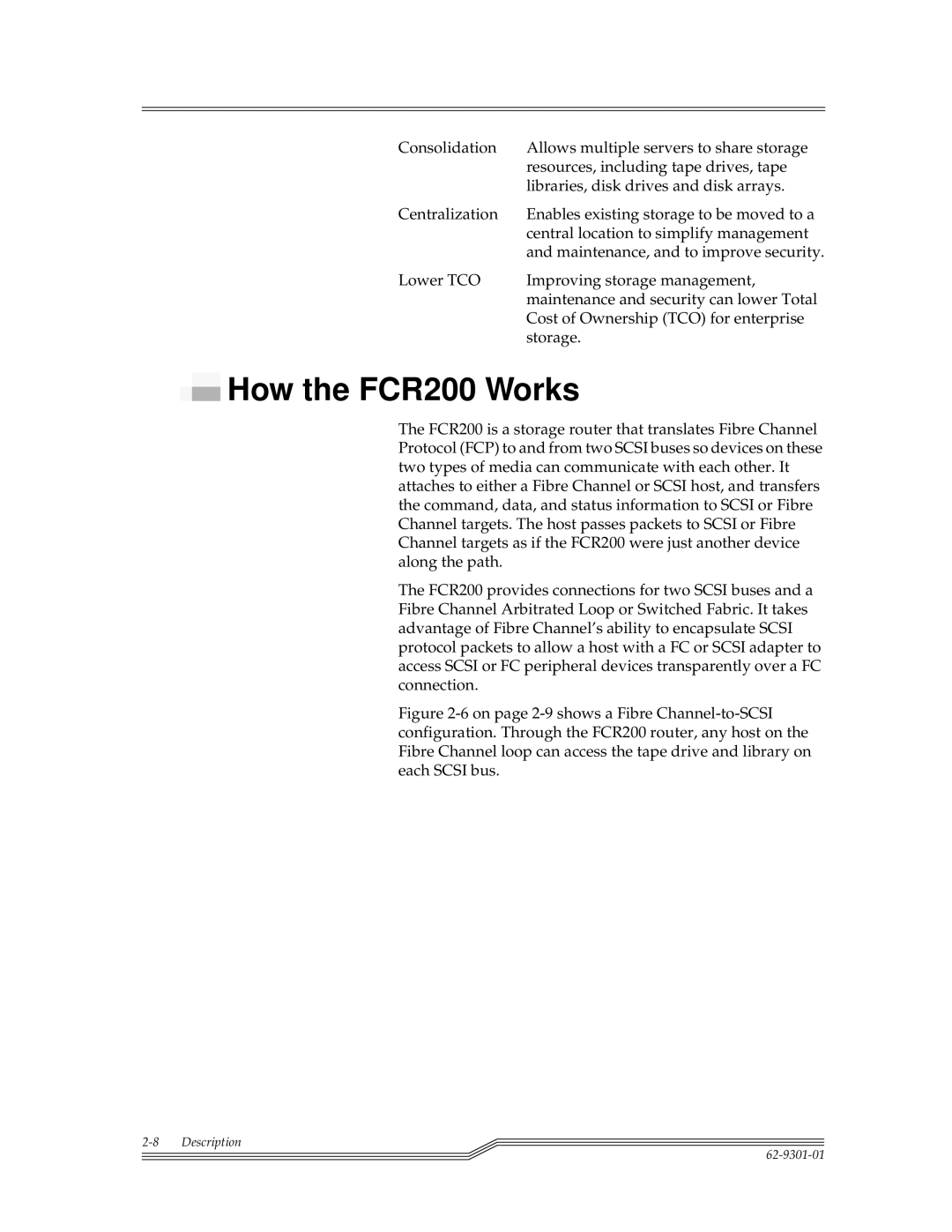
Consolidation | Allows multiple servers to share storage |
| resources, including tape drives, tape |
| libraries, disk drives and disk arrays. |
Centralization | Enables existing storage to be moved to a |
| central location to simplify management |
| and maintenance, and to improve security. |
Lower TCO | Improving storage management, |
| maintenance and security can lower Total |
| Cost of Ownership (TCO) for enterprise |
| storage. |
 How the FCR200 Works
How the FCR200 Works
The FCR200 is a storage router that translates Fibre Channel Protocol (FCP) to and from two SCSI buses so devices on these two types of media can communicate with each other. It attaches to either a Fibre Channel or SCSI host, and transfers the command, data, and status information to SCSI or Fibre Channel targets. The host passes packets to SCSI or Fibre Channel targets as if the FCR200 were just another device along the path.
The FCR200 provides connections for two SCSI buses and a Fibre Channel Arbitrated Loop or Switched Fabric. It takes advantage of Fibre Channel’s ability to encapsulate SCSI protocol packets to allow a host with a FC or SCSI adapter to access SCSI or FC peripheral devices transparently over a FC connection.
